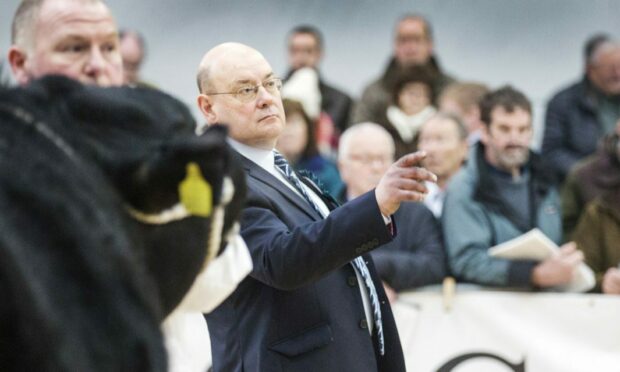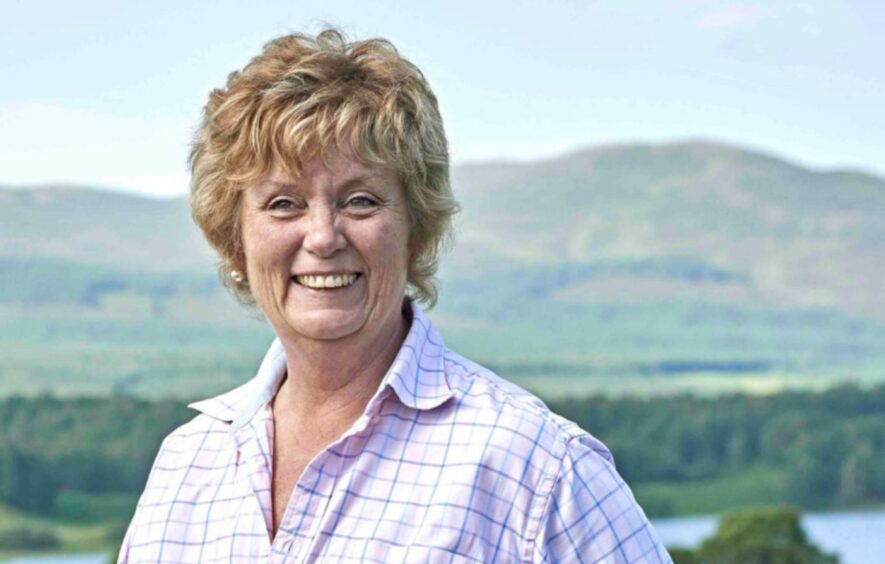The first week of the February bull sales kicks off with native breed judging, and UA Group auctioneer Raymond Kennedy is delighted that numbers have jumped back up to pre-Covid levels.
Visitors to Stirling will also be pleased to be able to watch the pre-sale shows again, although mask-wearing is still required.
Mr Kennedy said: “We held a show in October before we were locked down again, so we are delighted restrictions have been lifted a little to allow the shows to take place again this month. During the lockdown we just had a parade of cattle with a sale.”
Judging a massive entry of 170 Aberdeen-Angus bulls is John Elliot, who runs the Rawburn herd from his home at Roxburgh Mains, Kelso, and the Gordon herd from nearby Upper Huntleywood.
Rawburn Aberdeen-Angus have been established for around 70 years and number more than 200, while the Gordon herd, previously known as Linton Gilbertines, was inherited from the late Gordon Brooke in 2016 and amount to 130 cattle, mostly Aberdeen-Angus.
Well known in the pedigree world and hugely successful with both herds, Elliot sells around 130 mainly Angus bulls a year, he also has pedigree Beef Shorthorns.
All the Rawburn bulls are sold privately but in the last four years three bulls from the Gordon herd have sold for more than 20,000gns.
Mr Elliot said: “We performance-record religiously and our main breeding focus just now is feed efficiency.
“We feel that both pedigree and commercial breeders need animals that can convert forage to meat quickly and efficiently.
“We have been importing North American genetics to this end and have also installed an American feed efficiency system to measure and record the trait in the herds.”
Mr Elliot is honoured to be judging the February sales, which is a first for him, although he has judged all over the world including the Calgary Stampede.
He says he will be looking for bulls which flesh easily, are structurally sound but also have breed character.
Immediate past president of the Beef Shorthorn Society, Cathryn Williamson is in charge of placing the 97 Beef Shorthorn bulls entered.
She has been breeding Shorthorns since 2005 but established her own Balnespick herd at Kincraig, Inverness-shire in 2017. She now runs 25 cows on 60 hectares while working full-time as a bookkeeper.
Ms Williamson believes the recent surge in popularity of the breed is down to their easy-care benefits and excellent temperament.
She said: “So many farmers are working on their own now and they need easily maintained cattle which outwinter, calve themselves and are easy to handle.”
She is looking forward to her biggest judging challenge so far and says that locomotion is first and foremost in her choice of a bull
The Hereford breed is hoping to increase its presence in Scotland by holding a new Scottish National Sale at Stirling.
Liam Muir from Orkney is in charge of judging the 10 bulls and two heifers entered and reckons he was selected because of his wide knowledge of all breeds.
He buys bulls, commercial cattle and sheep for clients all over Orkney, Shetland and Caithness and has previously bought Herefords for some of the dairy farms on the islands.
He said: “The breed has managed to get itself bigger recently and I will be looking for a well-fleshed animal with a bit of lift and length.”
Mr Muir farms around 100 hectares at Upper Onston, Stenness, Stromness, where he has 40 commercial suckler cows and buys in some 100 grazers.


